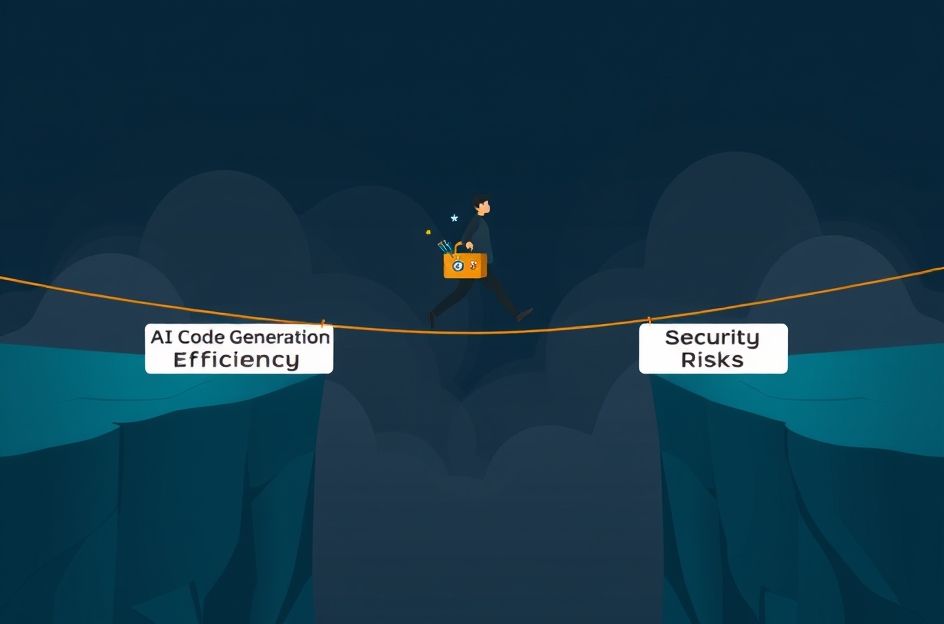Generative AI in Code: The Security Tightrope Walk
Generative AI is rapidly transforming software development, automating tasks and boosting productivity. Tools like GitHub Copilot and Tabnine are already commonplace, generating code snippets and entire functions based on natural language prompts. However, this exciting advancement introduces a new layer of security challenges that developers and organizations must proactively address.
The Double-Edged Sword: Efficiency vs. Security
The speed and efficiency of generative AI in code creation are undeniable. Developers can focus on higher-level design and logic, leaving repetitive tasks to the AI. However, this automation can inadvertently introduce vulnerabilities if not carefully managed. AI models are trained on vast datasets of public code, some of which may contain vulnerabilities or insecure practices. This means the AI might inadvertently generate code with similar flaws.
Vulnerabilities Introduced by AI-Generated Code
- Insecure Dependencies: AI might introduce outdated or vulnerable libraries into the codebase without proper vetting.
- Logic Errors Leading to Exploits: While seemingly functional, AI-generated code can contain subtle logic flaws that malicious actors could exploit.
- Hard-coded Credentials: AI might inadvertently include sensitive information like API keys or database passwords directly in the code.
- Backdoors and Malicious Code Injection: While less likely with reputable models, the possibility of adversarial attacks leading to malicious code injection remains.
- Unintentional Data Leaks: AI-generated code may inadvertently expose sensitive data through improper handling of user input or data storage.
Real-World Examples and Case Studies
While specific incidents are often kept private for security reasons, anecdotal evidence suggests vulnerabilities have been found in code generated by AI tools. One example could involve an AI generating code that fails to sanitize user inputs, leading to a cross-site scripting (XSS) vulnerability. Another could be the inclusion of a vulnerable library without proper version checking.
Mitigating Security Risks: A Multi-Layered Approach
- Robust Code Review: Manual code review is crucial to detect vulnerabilities missed by the AI. Peer reviews and automated static analysis tools should be used.
- Security Testing: Comprehensive security testing, including penetration testing and vulnerability scanning, should be conducted on AI-generated code.
- Dependency Management: Use a strong dependency management system to ensure all libraries are up-to-date and secure.
- Secure Coding Practices: Emphasize secure coding practices throughout the development lifecycle, regardless of the use of AI.
- AI Model Selection: Choose reputable AI code generation tools from established vendors with a strong security focus.
- Regular Updates and Patching: Keep the AI model and its associated libraries updated to benefit from security patches.
Code Example (Illustrative): Insecure vs. Secure User Input Handling
Insecure (AI-generated example – hypothetical):
user_input = input("Enter your username:")
print("Welcome, " + user_input + "!")Secure (Manually corrected):
import html
user_input = input("Enter your username:")
print("Welcome, " + html.escape(user_input) + "!")The secure version uses html.escape to prevent XSS attacks.
Future Implications and Trends
The future of AI-assisted coding will involve increased emphasis on security. We can expect to see advancements in AI models specifically trained to generate secure code, as well as more sophisticated tools for detecting vulnerabilities in AI-generated code. The integration of AI with existing security tools will become more seamless.
Actionable Takeaways
- Don't rely solely on AI for code generation; always perform thorough code reviews.
- Implement robust security testing procedures.
- Stay informed about emerging security threats related to AI-generated code.
Resource Recommendations
Stay updated on security best practices from OWASP (Open Web Application Security Project) and SANS Institute.
